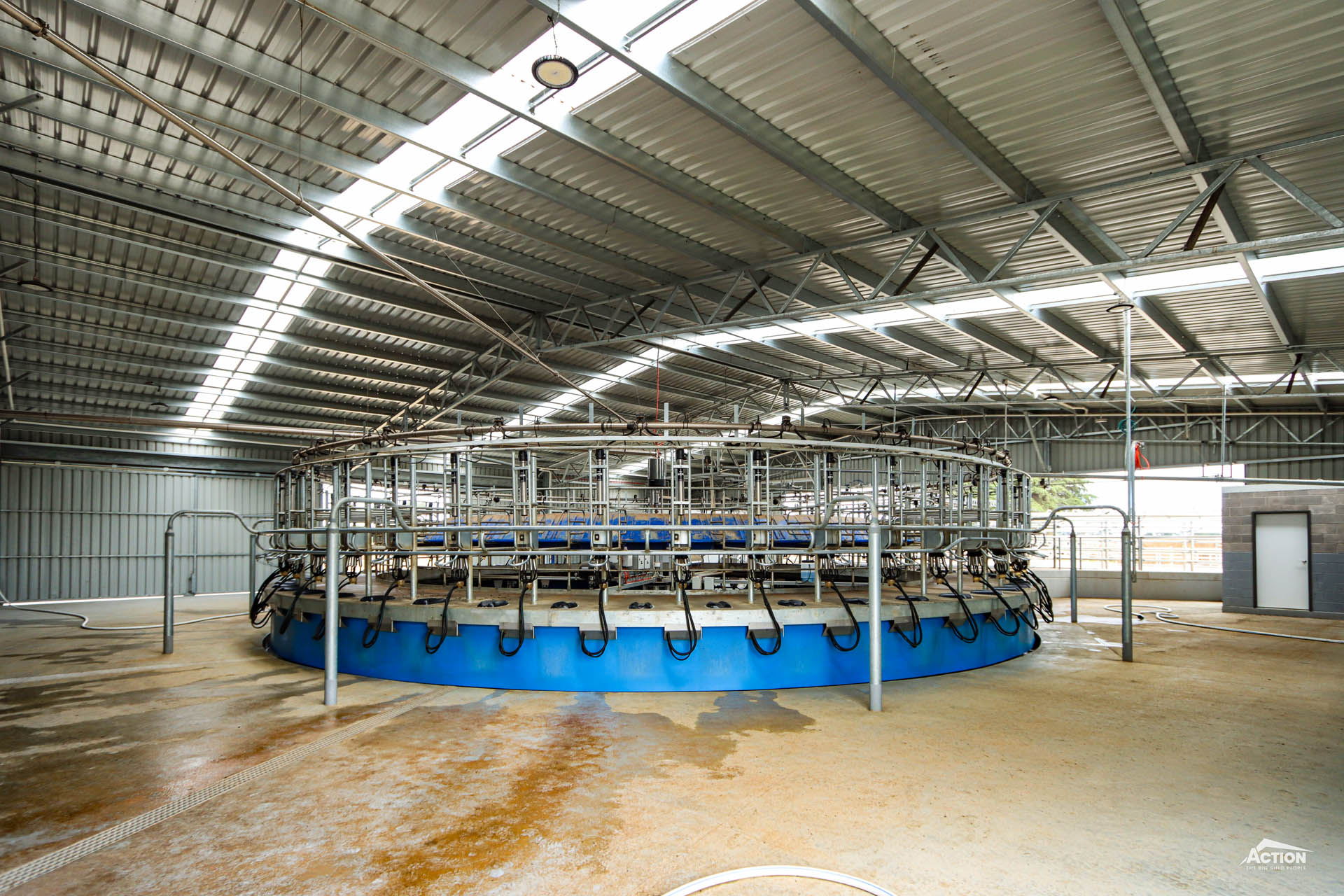If you are in the dairy industry, then will be familiar with the most common dairy design options. Rotary dairies and herringbone dairies – Automated Milk Sheds ‘AMS’ are also becoming more common,
Which design option is right for your dairy?
This article – rotary dairy vs herringbone dairy – is a back-to basics guide to the difference between these two options.
We hope this helps you decide which one is best for your dairy operation, whether it a completely new build or just a platform upgrade.
What is a Rotary Dairy?
Rotary dairies can accommodate large numbers of cows and can be equipped with automated features, such as feeders.

What is a Herringbone Dairy?
A herringbone dairy is a type of dairy platform which gets its name from the V-shaped shed layout. The layout creates a herringbone pattern.
The dairy shed is divided into two separate sections. One side is used for milking and the other side is used for housing the cows. The cows can walk directly from their stalls into the milking area. This contributes to a relatively straightforward milking process.
Herringbone dairy platforms are very popular in Europe and New Zealand and are common in the United States.
One advantage of the Herringbone Dairy model is that it allows for easier cow movement.
Rotary Dairy vs Herringbone Dairy- How are they different?
One of the most significant difference between the two dairy layout designs is the different methods they use to milk the cows.
Rotary dairies use a rotating platform to milk cows, while herringbone dairies use a linear system.
The advantage of the rotary dairy milking system is that it can milk more cows in a shorter amount of time in comparison to a herringbone dairy. This is why the rotary design is a popular choice for medium to large-scale dairy farms.
The herringbone milking systems also has it is advantages though, particularly when it comes to safety and cow comfort. For example, herringbone dairies are regarded as less likely to injure or stress cows.
Watch the video below from Dairy Australia for a more detailed comparison.

Which Dairy Design Is Right For You?
It can be difficult to decide which type of dairy is right for your business.
Firstly, it is important to choose a dairy shed design that can withstand the demands of your dairy farm operation. Rotary dairy set-ups are a good options for larger dairy farms.
Also, rotary dairies are generally considered to be more efficient than herringbone dairies. However, they do come with the disadvantage of requiring a higher initial investment.
It is important to remember that all decisions like this have an opportunity cost. In this case, while herringbone dairies aren’t as expensive, this benefit may be outweighed by its operational inefficiencies. The set-up may be more expensive to run in the long-term.
So, in summary:
Rotary dairy sheds are efficient and cost-effective over the long-term particularly for large dairy operations.
Herringbone dairy sheds are safe with a relatively low set up cost.
If you’re not sure which dairy is right for you, talk to one of our building consultants. They can provide you with more information about our dairy sheds and can refer you to leading dairy fit out suppliers like Greencon.
Efficient Milking Routines
– Dairy NZ
We hope this discussion on rotary dairy vs herringbone dairy has helped you consider your dairy shed design options and think about which would be a good fit for your dairy.
Browse our Learning Hub for more useful resources, videos and articles like this. One our most popular articles is: What is the difference between pre-gal and hot-dip galvanizing? – and this is also an important consideration for new dairy shed build.
You might also like:
- What Are The Standard Spans For Farm Sheds?
- How Much Does It Cost To Build A Commodity Storage Shed?
- 3 Farm Shed Lighting Options
- Covered Feedpad & Contained Housing Guide (PDF Download)
YOUR TRUSTED FARM SHED COMPANY
At Action Steel, we specialise in building quality farm sheds designed for livestock and cropping enterprises. Our farm shed range includes dairy sheds, calf sheds and hay sheds.
For dairy shed projects, we partner with leading dairy fit out suppliers to deliver turnkey shed solutions. If you are considering a new dairy shed build, please don’t hesitate to contact us.







